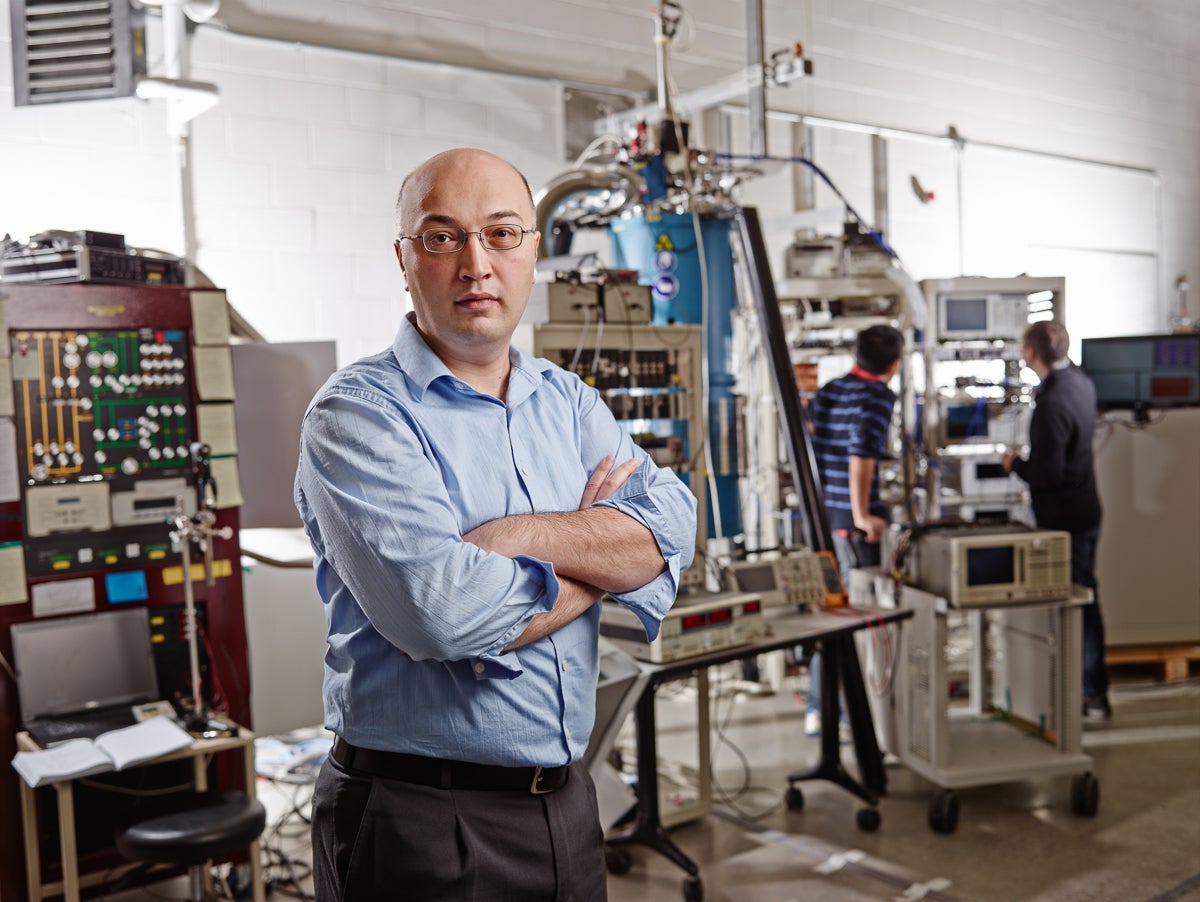
University of Waterloo receives Quantum Horizon funding award
The awarded proposal seeks to understand and mitigate the loss of quantum information

The awarded proposal seeks to understand and mitigate the loss of quantum information
By Media RelationsThe Quantum Horizons: Quantum Information Science (QIS) Research and Innovation for Nuclear Science award from the U.S. Department of Energy's Office of Nuclear Physics has enabled a new collaboration between researchers who develop technologies for nuclear physics, quantum information science and high-energy physics.
Adrian Lupascu, a member of the Institute for Quantum Computing and the Department of Physics and Astronomy at the University of Waterloo, is a co-principal investigator (PI) alongside Anne-Marie Valente-Feliciano, an accelerator physicist at the U.S. Department of Energy's Thomas Jefferson National Accelerator Facility. Mustafa Bal, an associate scientist at the U.S. Department of Energy's Fermi National Accelerator Laboratory-hosted Superconducting Quantum Materials and Systems (SQMS) Center, is the lead PI who will coordinate the project "QIS and nuclear physics technologies for next generation materials and architectures for high coherence superconducting qubits" funded by the award.

Professor Lupascu
This awarded proposal seeks to understand and mitigate the loss of quantum information in quantum systems by a phenomenon called decoherence. The decoherence of qubits — devices that harness fragile quantum information — needs to be tackled to unlock the power of quantum computers fully.
"One of our team's main areas of interest is understanding how well quantum information is preserved in devices. For this process, the quality of materials is essential," Lupascu said. "The film expertise at Jefferson Lab and the collaboration with SQMS will provide an opportunity to explore new physics and advance quantum devices."
Building on Waterloo's experience in designing and measuring different kinds of qubits and the SQMS Center's breadth of expertise and facilities, this award adds Jefferson Lab's capabilities in producing highly pure niobium films.
Cavities made of niobium can accelerate particles to near the speed of light and are the best in the world, but there is room to maintain high performance while reducing costs by depositing a thin film of niobium on a copper cavity.
"We are developing advanced techniques to produce high-quality, niobium-film-based accelerating cavities. We think these films will also improve the lifetime of quantum information in qubits," Valente-Feliciano said. "Most niobium films have impurities and are atomically disordered, which might contribute to the loss of quantum information in qubits. Our research at Jefferson Lab is producing atomically ordered, highly pure films with the best properties and performance."
Lupascu will explore new designs for quantum computing devices made with these films and study the devices' performance at ultra-cold temperatures. This effort will seek ways to produce these devices while maintaining high performance and reproducibility across a range of devices, which is important for the scalability of quantum computers.
"Our SQMS Center is uniquely positioned to make advancements in the performance of superconducting qubits. We will accelerate towards this goal by exploring new promising and unique pathways," Bal said. "Through the Quantum Horizon award, we will use the films made by Jefferson Lab to explore material purity as a potential path to improve qubit performance. The experts at the University of Waterloo will expand our capabilities to make other types of qubits."
The collaboration for this Quantum Horizons award brings together dozens of experts in Quantum Information Science, material science and more to tackle decoherence with the most advanced material analysis tools and qubit foundries.

Read more
Scientists recreate properties of light in neutral fundamental particles called neutrons

Read more
A new imaging technique using quantum science may lead to novel drug therapies and treatment options, a recent study has found.

Read more
Researchers take step towards more complex quantum simulations
The University of Waterloo acknowledges that much of our work takes place on the traditional territory of the Neutral, Anishinaabeg, and Haudenosaunee peoples. Our main campus is situated on the Haldimand Tract, the land granted to the Six Nations that includes six miles on each side of the Grand River. Our active work toward reconciliation takes place across our campuses through research, learning, teaching, and community building, and is co-ordinated within the Office of Indigenous Relations.